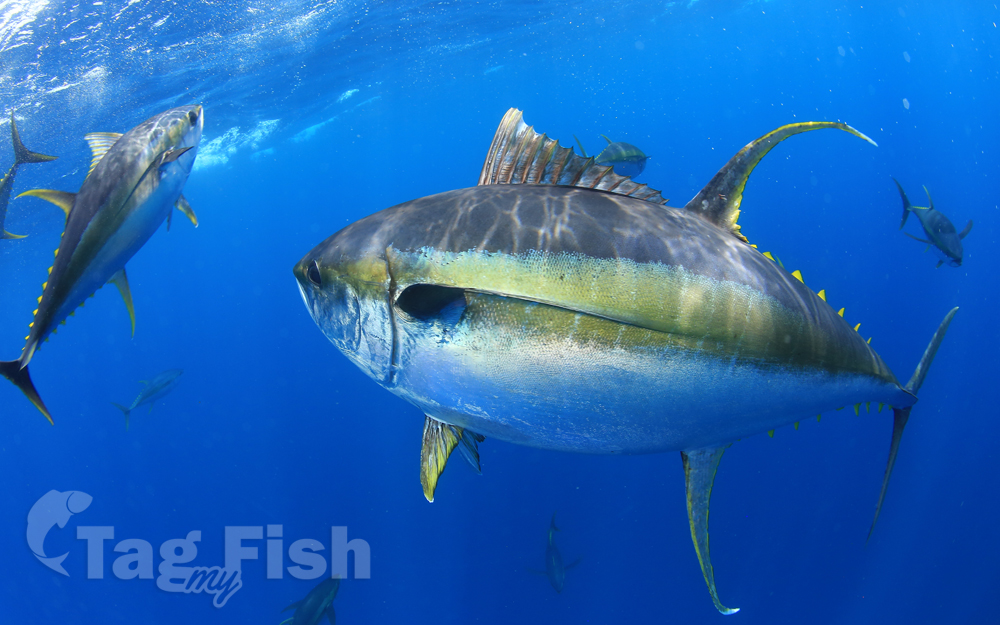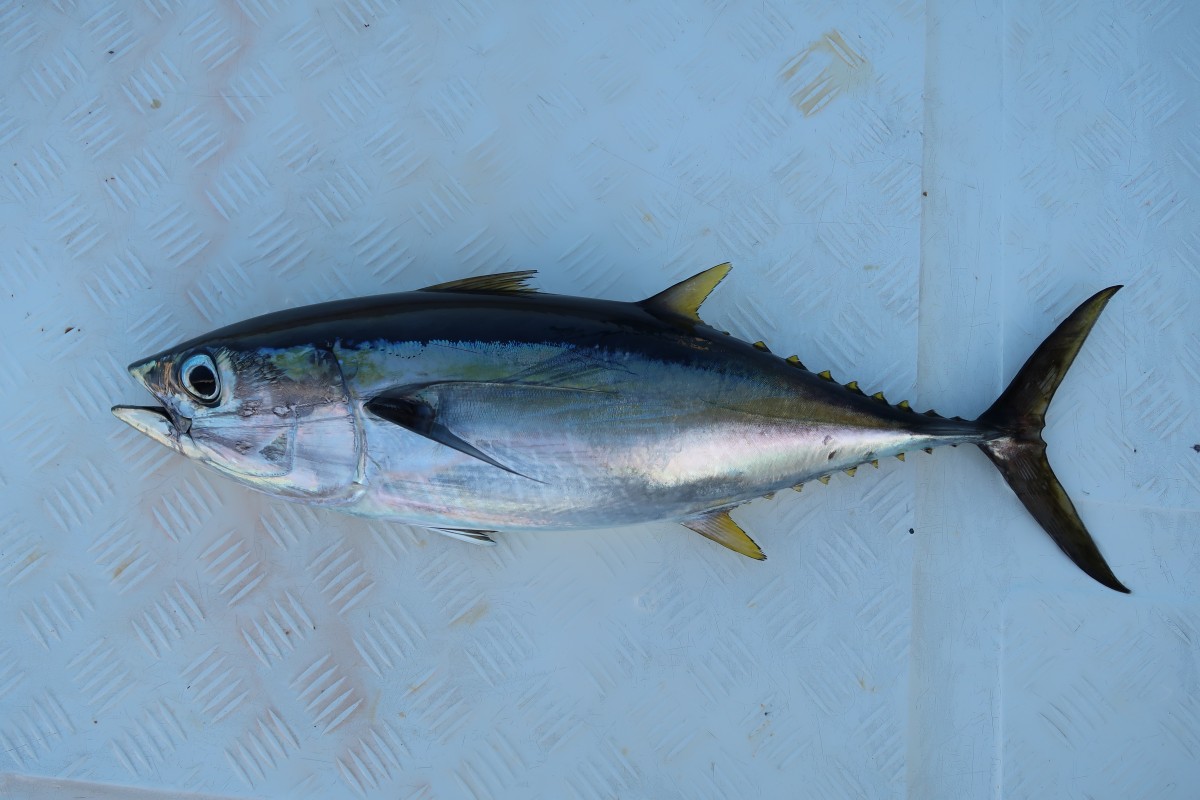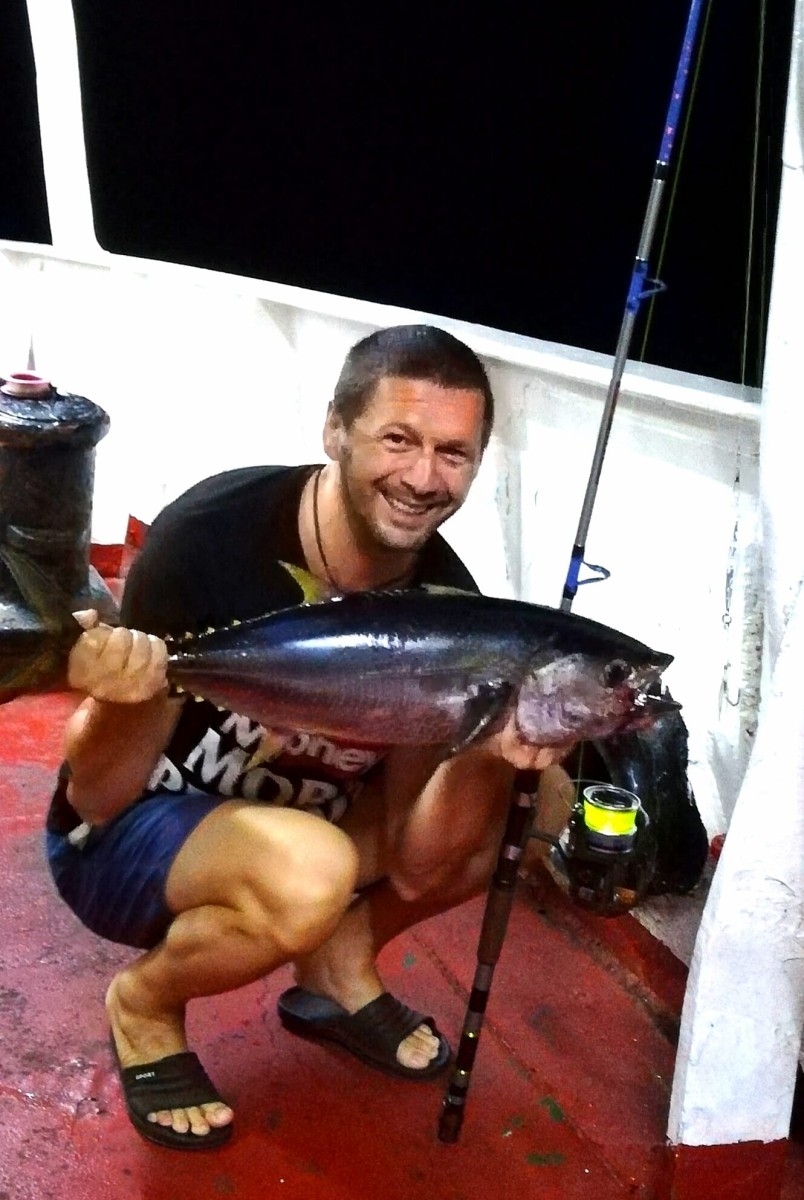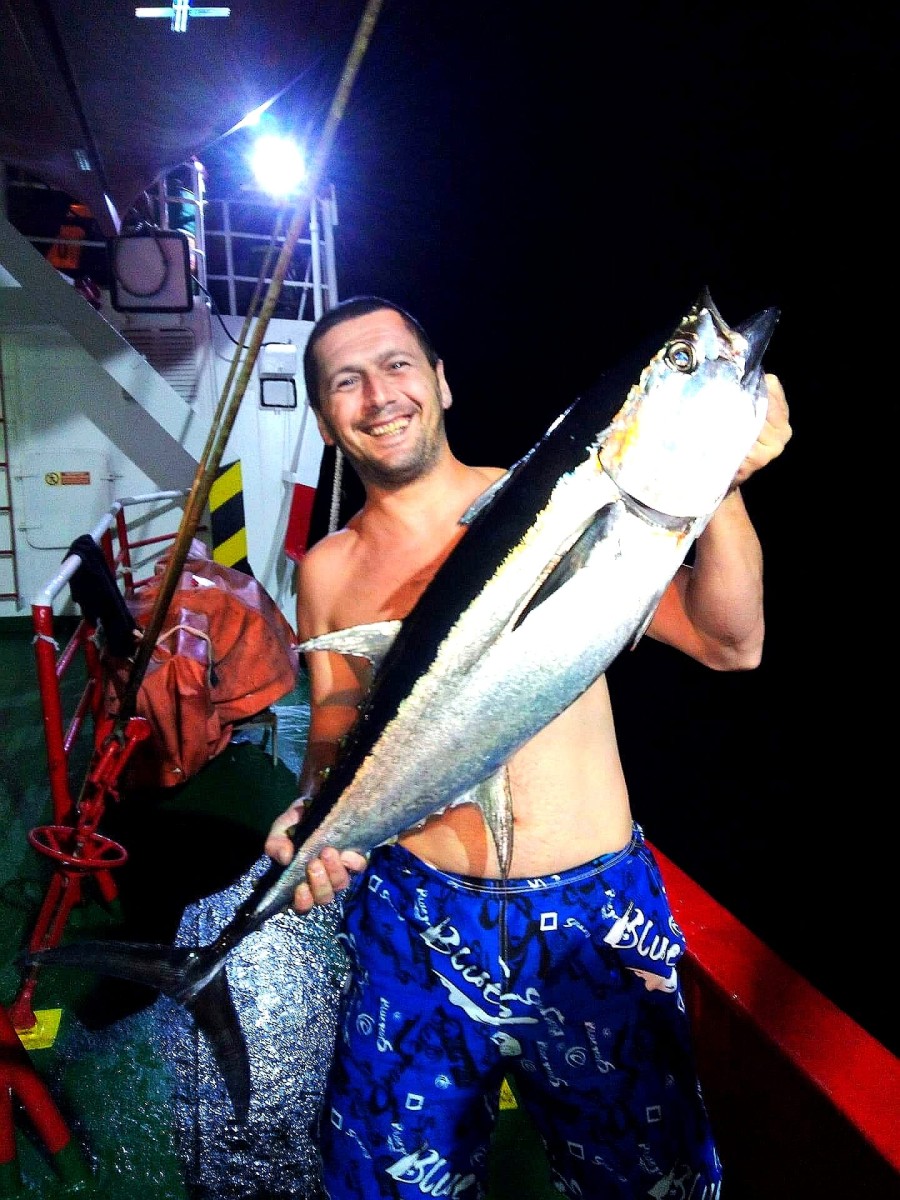Yellowfin tuna
(Thunnus albacares)

Classification
General data
The yellowfin tuna (Thunnus albacares) is a species of tuna found in pelagic waters of tropical and subtropical oceans worldwide.
Yellowfin is often marketed as ahi, from the Hawaiian ahi, a name also used there for the closely related bigeye tuna. The species name, albacares (white meat) can also lead to confusion: in English, the albacore (Thunnus alalunga) is a different species, while yellowfin is officially designated albacore in French and referred to as albacora by Portuguese fishermen.
Description
The yellowfin tuna is among the larger tuna species, reaching weights over 180 kg (400 lb), but is significantly smaller than the Atlantic and Pacific bluefin tunas, which can reach over 450 kg (990 lb), and slightly smaller than the bigeye tuna and the southern bluefin tuna.
The second dorsal fin and the anal fin, as well as the finlets between those fins and the tail, are bright yellow, giving this fish its common name. The second dorsal and anal fins can be very long in mature specimens, reaching almost as far back as the tail and giving the appearance of sickles or scimitars. The pectoral fins are also longer than the related bluefin tuna, but not as long as those of the albacore. The main body is a very dark metallic blue, changing to silver on the belly, which has about 20 vertical lines.
Reported sizes in the literature have ranged as high as 2.4 m (94 in) in length and 200 kg (440 lb) in weight. The International Game Fish Association (IGFA) record for this species stands at 176 kg (388 lb) for a fish caught in 1977 near San Benedicto Island in the Pacific waters of Mexico. In 2010, a 184-kg yellowfin was caught off the tip of Mexico\'s Baja Peninsula, 2.2-metre (87 in) long with a girth of 1.5 m (59 in). The catch is still pending verification by the IGFA. In 2012, a fisherman in Baja California caught a 193-kg yellowfin. If the catch is confirmed by the IGFA, the fisherman will receive a prize of $1 million.
Habitat
Yellowfin tuna are epipelagic fish that inhabit the mixed surface layer of the ocean above the thermocline. Sonic tracking has found that although yellowfin tuna, unlike the related bigeye tuna, mostly range in the top 100 m (330 ft) of the water column and penetrate the thermocline relatively infrequently, they are capable of diving to considerable depths. An individual tagged in the Indian Ocean with an archival tag spent 85% of its time in depths shallower than 75 m (246 ft), but was recorded as having made three dives to 578, 982, and 1,160 m (3,810 ft).
Behavior
Although mainly found in deep offshore waters, yellowfin tuna may approach shore when suitable conditions exist. Mid-ocean islands such as the Hawaiian archipelago, other island groups in the Western Pacific, Caribbean, and Maldives islands Indian Ocean, as well as the volcanic islands of the Atlantic such as Ascension Island and Saint Helena, often harbor yellowfin feeding on the baitfish these spots concentrate close to the shoreline. Yellowfin may venture well inshore of the continental shelf when water temperature and clarity are suitable and food is abundant.
Yellowfin tuna often travel in schools with similarly sized companions. They sometimes school with other tuna species and mixed schools of small yellowfin, and skipjack tuna, in particular, are commonplace. They are often associated with various species of dolphins or porpoises, as well as with larger marine creatures such as whales and whale sharks. They also associate with drifting flotsam such as logs and pallets, and sonic tagging indicates some follow moving vessels. Hawaiian yellowfins associate with anchored fish aggregation devices and with certain sections of the 50-fathom curve.
Diet and predation
Yellowfin tuna prey includes other fish, pelagic crustaceans, and squid. Like all tunas, their body shape is particularly adapted for speed, enabling them to pursue and capture fast-moving baitfish such as flying fish, sauries, and mackerel. Schooling species such as myctophids or lanternfish and similar pelagic driftfish, anchovies, and sardines are frequently taken. Large yellowfins prey on smaller members of the tuna family such as frigate mackerel and skipjack tuna.
In turn, yellowfin are preyed upon when young by other pelagic hunters, including larger tuna, seabirds, and predatory fishes such as wahoo, shark, and billfish. Adults are threatened only by the largest and fastest hunters, such as toothed whales, particularly the false killer whale, pelagic sharks such as the mako and great white, large Atlantic blue marlin and Pacific blue marlin, and black marlin. The main source of mortality, however, is industrial tuna fisheries.
Yellowfins are able to escape most predators because, unlike most fish, tuna are warm-blooded, and their warm muscles make them extremely strong swimmers, with yellowfin tuna reaching speeds of up to 50 miles per hour. They can navigate enormous distances, sometimes crossing entire oceans.














